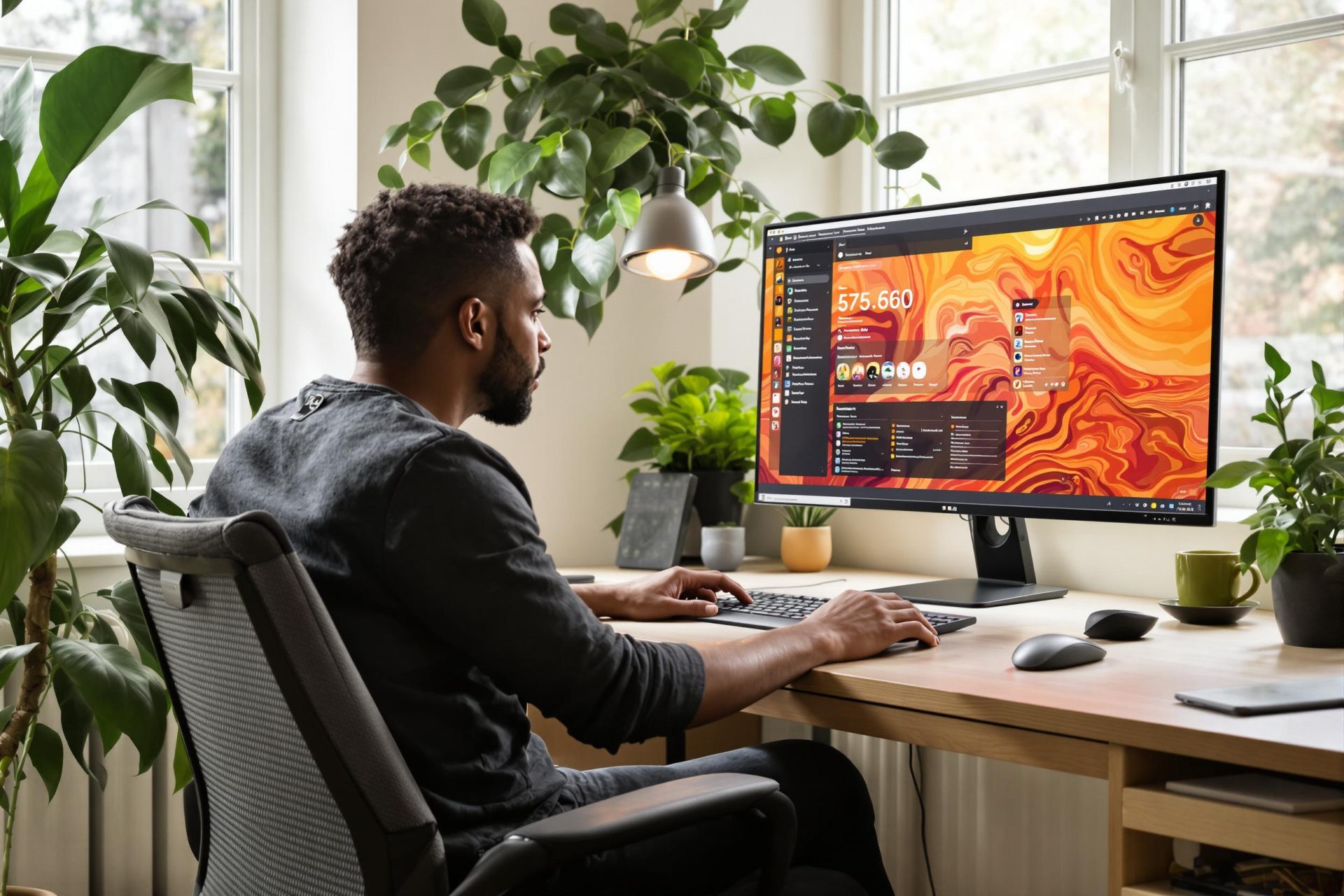Key Takeaways
- Marketing visuals for technology and the future often rely on a ‘tech blues’ aesthetic – sleek, blue, and holographic.
- This trend has deep roots in iconic science fiction films.
- The rise of AI has led to a resurgence of this blue-dominated imagery.
- However, authentic, human-focused visuals are more effective for building audience trust.
- Brands can connect better by using warmer, more relatable depictions of technology centered on people.
The future is often imagined with a strikingly similar look in marketing. When we picture what’s next, why do so many visuals settle on a single, dominant style?
An analysis of creative assets on Getty Images, featured in an article on Adweek, found that in 2024, visuals of the future are highly sought after. The most popular ones showcase sleek holograms, glowing lines of code, and a lot of blue.
This tendency to link technology and the future with cool tones and glowing, dream-like scenes isn’t new. It’s largely thanks to influential science fiction movies, which established the future as a blue, sterile, and minimalist world.
Despite some efforts to introduce other colors, this depiction has changed little over the past 30 years. Now, with the boom in artificial intelligence, there’s a renewed fondness for these traditional blue-heavy tech visuals.
AI is rapidly changing how we live and work. Marketers often fall back on familiar sci-fi visuals to represent it. But this cool, icy palette doesn’t always match people’s real experiences with technology.
According to a Getty Images’ VisualGPS AI report, also highlighted by Adweek, 98% of consumers believe authentic visuals are crucial for building trust. This suggests that moving beyond the “tech blues” could be vital for connecting with today’s audiences.
Films like Blade Runner, with its almost entirely blue finale, helped set this visual precedent long before the internet era. Its aesthetic, along with other sci-fi classics like The Matrix, created a visual shorthand for technology.
Real-world tech advancements, like the internet and CGI, further cemented blue tones with future visualizations. In the 1990s, brands aimed for broad appeal, adopting the recognizable movie aesthetic. Blue cast the future as cold and calculated, with minimalist, angular environments.
It wasn’t until the 2010s that other colors started appearing more frequently. Pinks and purples blended with blues offered a warmer, more inclusive feel to tech imagery. Images also began to feature people using technology, not just the tech itself.
Now, generative AI is everywhere, and the “tech blue” aesthetic is back in force. Even the AI tools themselves might be reinforcing this, as they are often trained on existing images that associate “future” with these blue, masculine, and clinical visuals.
To counter this, brands might consider shifting towards images and videos that feel more accessible and relatable. Generative AI can still be useful for imaginative visuals, but it needs to be balanced with authenticity.
Focusing on real people using technology in meaningful ways can change the entire color scheme. Interestingly, despite blue’s popularity in tech imagery, two of Getty Images’ top-selling images of 2024 featured warm orange and yellow hues, signaling a desire for warmth and positivity.
A notable trend in visuals is the focus on hands. Showing hands interacting with technology, like pressing a glowing key, emphasizes human control and autonomy. This is also a subtle response to AI-generated imagery, as AI models often struggle to depict hands accurately, making them a symbol of authenticity.
As more brands use AI, simply checking for well-rendered hands isn’t enough for transparency. Clearly labeling AI-generated or modified content is important to avoid misleading audiences. Using AI tools trained on properly licensed content also builds trust and supports creators.
Our relationships with technology are personal; most of us use it daily. Brands excel at showing the utility of smartphones and laptops, but new tech like AI often drives them back to the “tech blues.”
AI can be hard to visualize, leading to a reliance on clinical, scientific imagery. However, everyday people don’t use AI in high-tech labs. To resonate, brands should bring the future home with more vibrant, energetic styles, as some major tech companies are already doing.
Moving beyond the “tech blues” is about more than just changing colors. It’s about creating visuals that portray a warmer, more inclusive future, focusing on how technology benefits people, relationships, and creativity.



